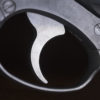Imagine you are awakened at 2:00 AM by a strange noise in your home. When you investigate, you are attacked unexpectedly by a home intruder. Your dominant shooting hand is injured during the initial scuffle, and you cannot properly handle your firearm to protect yourself. How do you survive? Here are 4 ways.
Practice with your non-dominant hand
The next time you are at the shooting range, spend some time shooting with your non-dominant hand. It will feel unnatural to most individuals since your shooting method is reversed. Be sure to take your time, as you are essentially learning how to shoot your firearm all over again. Practicing before you actually sustain an injury will help ensure you survive an attack when your dominant hand is incapable of handling your firearm properly.
Switch to a firearm with less kick
You may consider switching to a firearm with less kick when you are injured or disabled. If you cannot properly handle your normal firearm, the likelihood your shot will miss an attacker, and possibly strike an innocent bystander, increases. Switching to a smaller firearm that you can handle properly increases your accuracy, saving precious time when stopping an attacker. You should also consider the style of your firearm. If it is too difficult to load a magazine to use in a semi-automatic pistol, a revolver may be easier to load.
Alternative options for protection
If your injury or disability is significant enough that you cannot handle a firearm safely with your non-dominant hand, you may consider an alternative for protection. A stun gun or pepper spray will allow you to keep a safe distance between yourself and an attacker when protecting yourself.
Staying vigilant when injured or disabled
Unfortunately, individuals who appear injured or disabled are specifically targeted by criminals as an easy target. When you are in public, be mindful of your surroundings and the people nearby. Body language can give you a lot of information of a passerby’s intentions towards you. Before leaving your home practice concealing your firearm in a location that makes your firearm comfortable and quickly accessible for your injury or disability. If you cannot comfortably or safely keep your firearm tucked into your waist or under your shirt, consider using a fanny pack, or a bag specifically designed for concealed carry.
Whichever protection strategy you choose, be sure to practice regularly, so you can better protect yourself and loved ones when attacked. If you need a refresher on proper gun handling techniques, be sure to check out American Concealed’s training products for both online and in-hand training.


